From furs to fishing, take a trip through 200 years of history in Gaultois
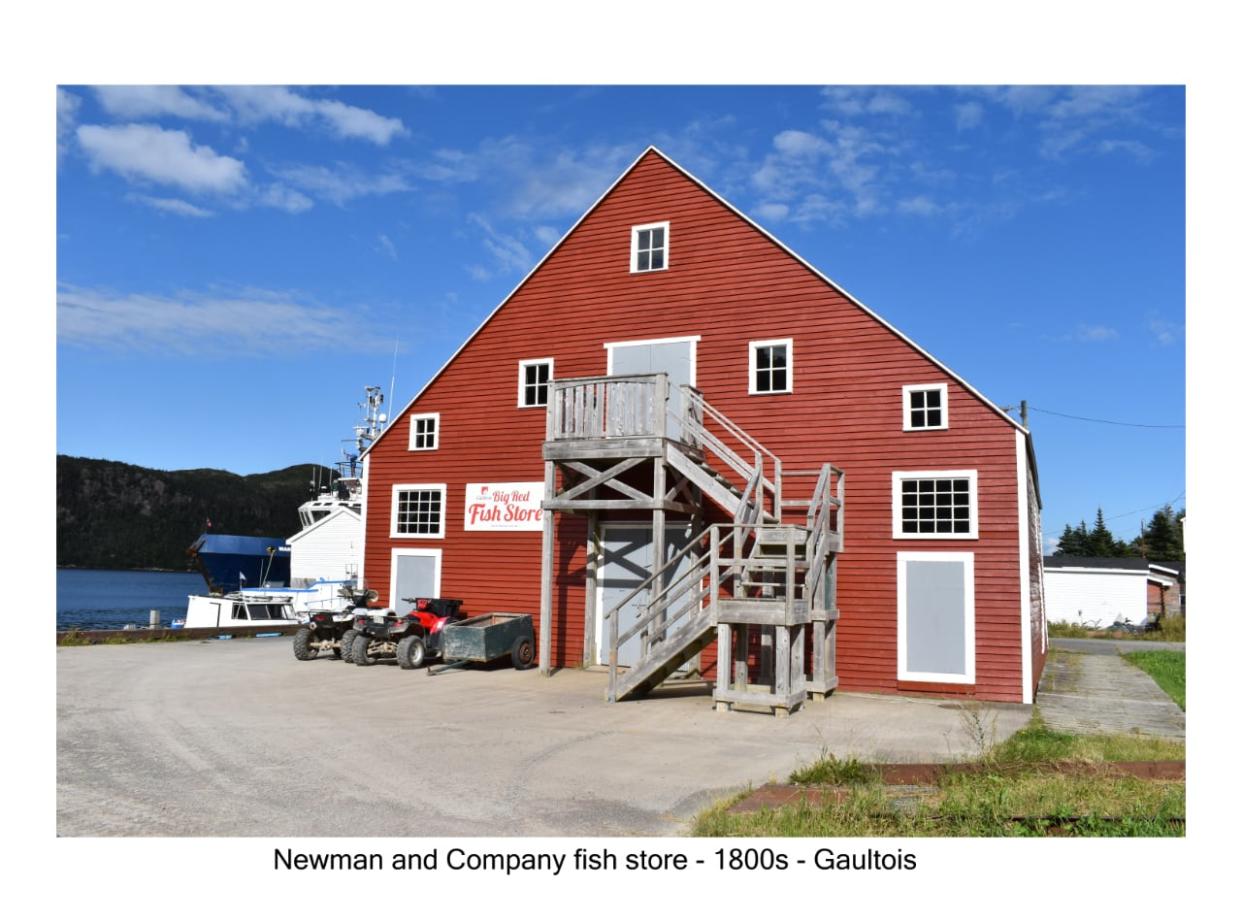

The Newman and Company fish store in Gaultois dates back to the 1800s. (Allan Stoodley)
Sixty years ago, Gaultois — an isolated island community on Newfoundland's south coast — had a population of approximately 600. Now fewer than 100 people live there.
Gaultois has gone through many changes in its more than 200-year history — from being home to many Indigenous people to eventually being settled by the French and British pursuing the fishery in the area. The fishery there was so lucrative that British merchants Newman and Company, by the mid-1800s, had set up shop providing its citizens with basic amenities, including groceries, clothing and fishing equipment.
They also established trade with the Mi'kmaw community at Miawpukek, at Bay D'Espoir, also long referred to as Conne River. According to Doug Jackson, writing in his book On the Country, the Micmac of Newfoundland, "Trading patterns altered in the 19th century, from historical connection with the French to English settlements along the south coast. By mid-century most furs went to Newman and Company at Gaultois."
Newman and Company moved out of the community and out of Newfoundland in 1900. Six years later, Thomas Garland — another British merchant — started a business there and before long became the main employer in the town.
Gaultois was also the site of a shore-based whaling station during the 19th century. It was on Whale (Lamy) Island at the entrance to Gaultois Harbour, about 150 metres northeast of the town's public wharf. Preliminary archival research indicated it was a successful and long-lasting operation.
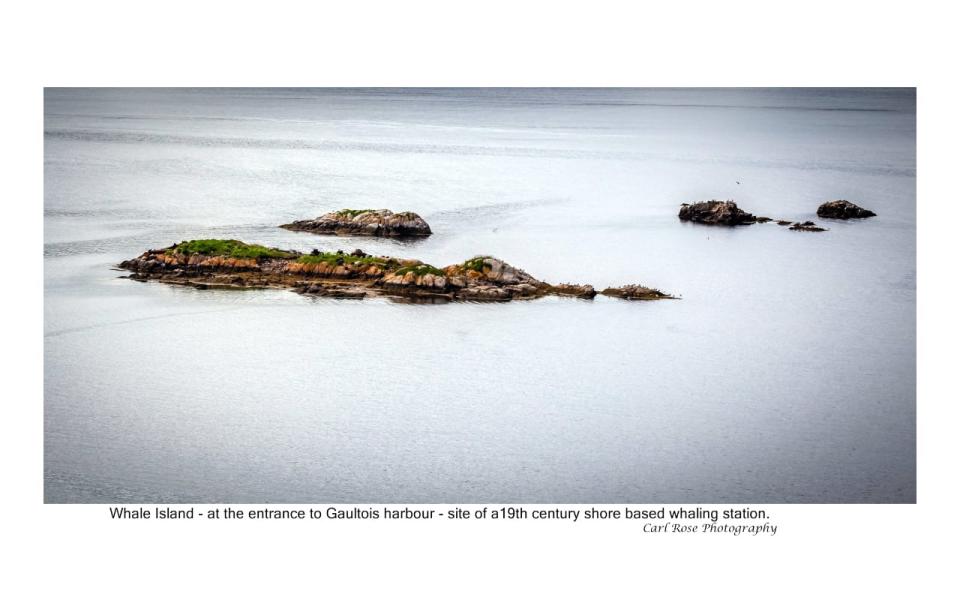
Whale Island, at the entrance to Gaultois Harbour, was the site of a 19th century shore-based whaling station. (Carl Rose Photography)
Before Confederation with Canada in 1949, Gaultois was the customs town for those wishing to travel to the nearby French islands of St-Pierre-Miquelon. Prior to the resettlement era of the 1950s-1970s, the population had declined to 107 in 1956 from a peak of 252 five years earlier.
Fish plant closure hit hard
But after resettlement, by 1966, its population had risen to 594 with now the fish plant and its draggers being the main employer of the town. Gaultois had become a growth centre, with families moving there from nearby smaller communities to work on the draggers and in the fish plant.
Things went sour for Gaultois when the Lake Group announced the first closure of its fish plant in 1981. Another came in 1990, when the new owners, Fishery Products International, closed the plant. The lifeblood of the town was gone for good when the fish plant closed permanently in 2010.
Our next-door neighbours in Grand Bank, Dianne and Glenn Rogers, taught school at Gaultois for 12 years, from 1988 to 2000. Glenn was the principal of Victoria All-Grade School while Dianne taught grades 2 and 3. During her first year there, 1988-89, she had 27 students in her classroom, with a total school enrolment of 140. There were nine students in the graduating class.
While the Rogers were teaching at Gaultois, the school burned to the ground on Sept. 19. 1998. The replacement Victoria All-Grade school was built and opened in February 2000.
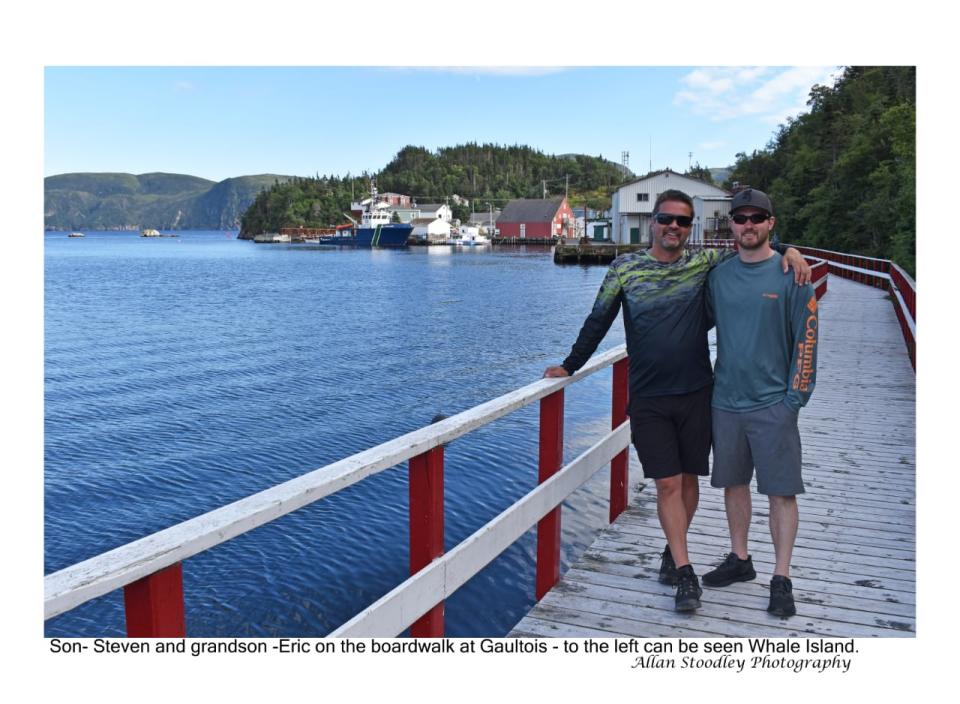
Allan Stoodley's son Steven and grandson Eric stand on the wooden boardwalkin Gaultois that joins the Room with the Point (the most populated part of the town) across the harbour. Whale Island can be seen to the left. (Allan Stoodley)
When Carl Rose was six or seven years old, his family moved from Great Harbour in Connaigre Bay to Gaultois, as part of the resettlement program of the 1960s and '70s. When he was 21, he, along with his wife Shirley, also from Gaultois, who was nursing, moved to Grand Bank for what was supposed to be one year; they are still here, but they still have very strong feelings for Gaultois.
"We enjoyed a great childhood there," Carl Rose told me, "along with our siblings we make frequent visits back there — it's like being home."
A shadow of its former self
For some 20 years (1960-1980) I travelled the south coast from Bay L'Argent in Fortune Bay to as far west as Burgeo and Ramea, as a sales rep for Swift Canadian Co., a major meat-packaging company. Three times a year I would make the trip — often on a small boat but sometimes on the Canadian National coastal vessel. Gaultois was one of ports I visited, as we had two business customers there: Thomas Garland Ltd. and Frank Lilly.
This past July I returned to Gaultois — the first time in 43 years — and what I found was a community that is a shadow of its former self.
The 2021 census pegged the population at 100, but there are fewer people there now, and the school enrolment is only four students. Resettlement has been proposed more than once in recent years — including this year — but has failed to get enough support.
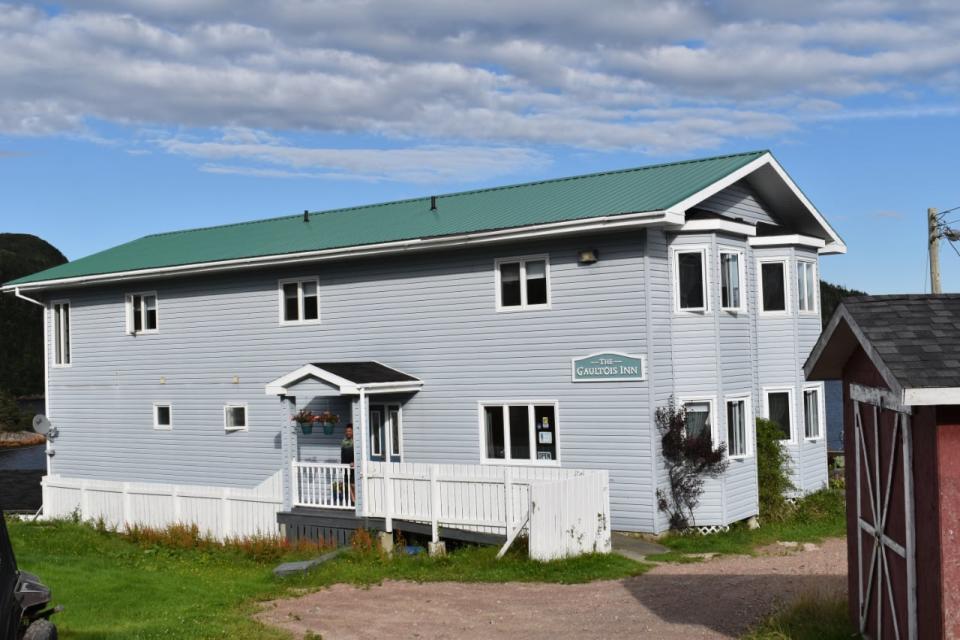
The Gaultois Inn is renowned for its food and hospitality. (Allan Stoodley)
A provincial government ferry runs from the nearby town of Hermitage several times daily, with the crossing taking less than 30 minutes. The same ferry also serves the more remote community of McCallum with a crossing time of one hour and 15 minutes.
There are three trucks in Gaultois, a community truck and two fire trucks. The primary means of transportation to and from the ferry and around town are ATVs and snowmobiles.
Gaultois has four distinct areas: the Room near the wharf, where decades ago salt fish was dried for market on flakes; the Valley, up the hill a little and surrounded by a high rock face, home to about 10 homes; the Point, the most populated part of town, across the harbour from the Room, connected by a wooden boardwalk at the base of the rock face; the Bottom, the most isolated part of town, up the hill and down the other side from the Point .
The past couple of years I've been fortunate, thanks to accompanying my son Steven in his boat, to have also visited two other south coast towns, English Harbour West and Harbour Breton.
The trip to Gaultois from Grand Bank this summer took us about two and a half hours, passing close by the deserted communities of Pass Island and Grole. We also went up Bay d'Espoir as far as Milltown, Conne River and St. Albans.
Those boat trips down memory lane are, for me, as good as it gets.
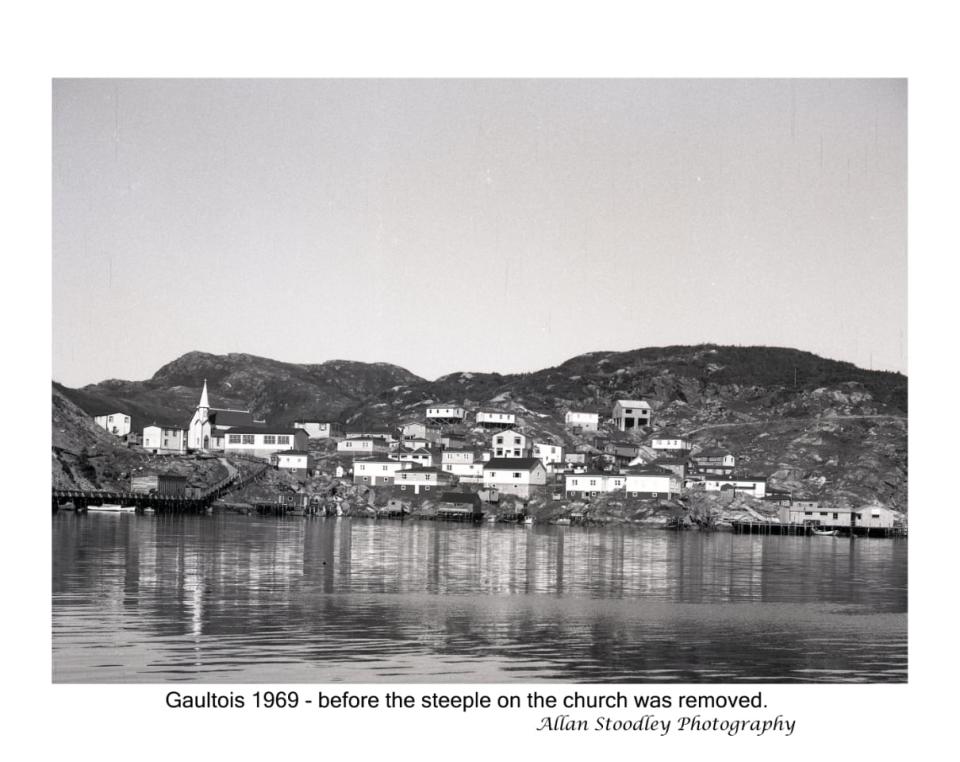
Gaultois is pictured in 1969, before the steeple on the church was removed. (Allan Stoodley)
Download our free CBC News app to sign up for push alerts for CBC Newfoundland and Labrador. Click here to visit our landing page.


